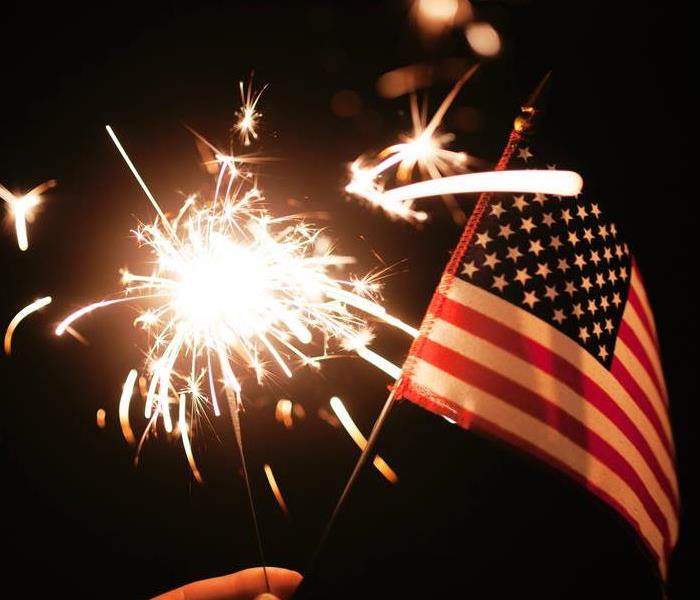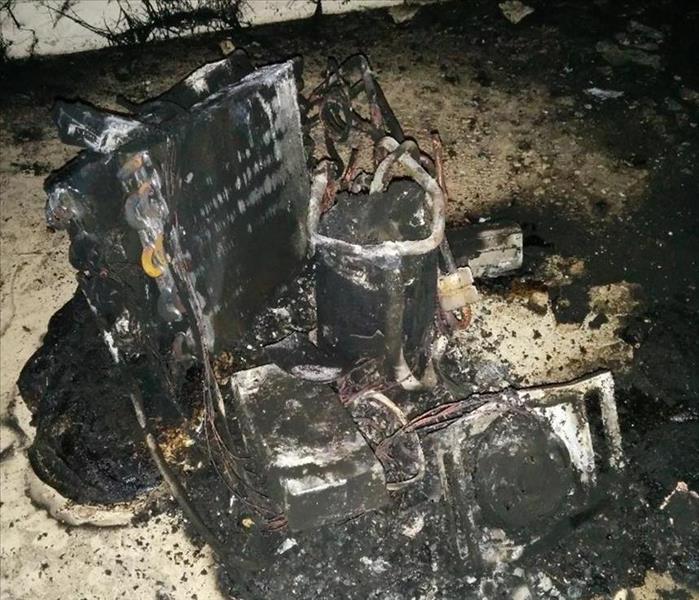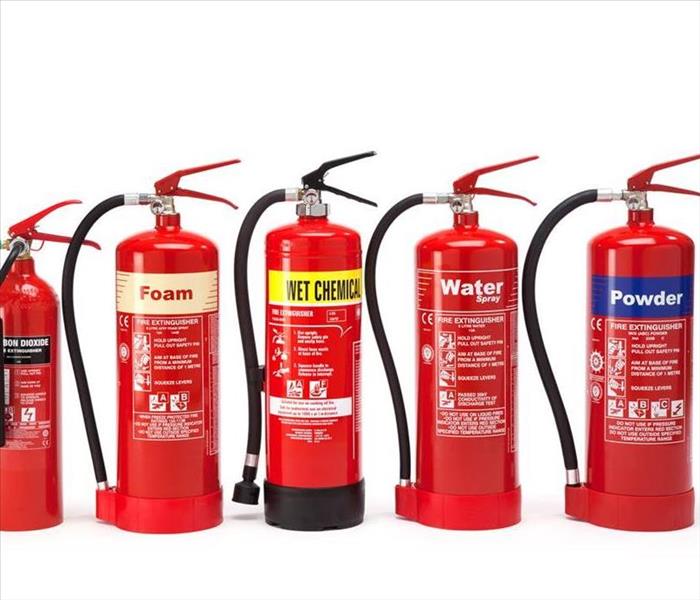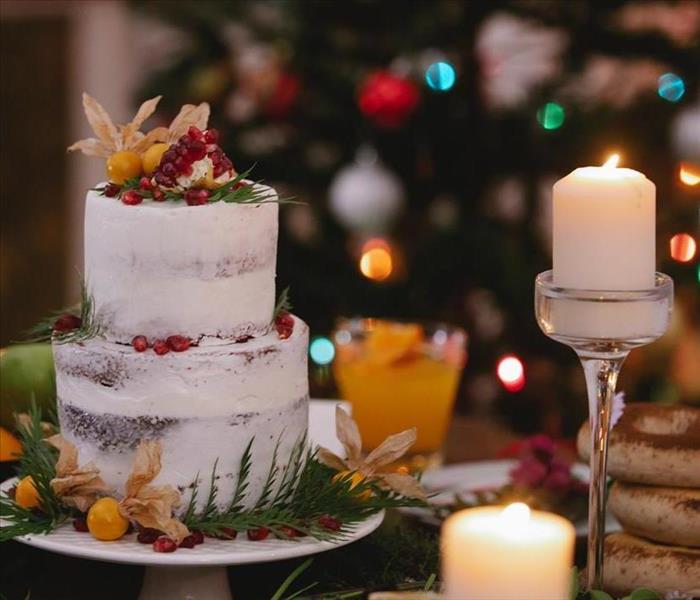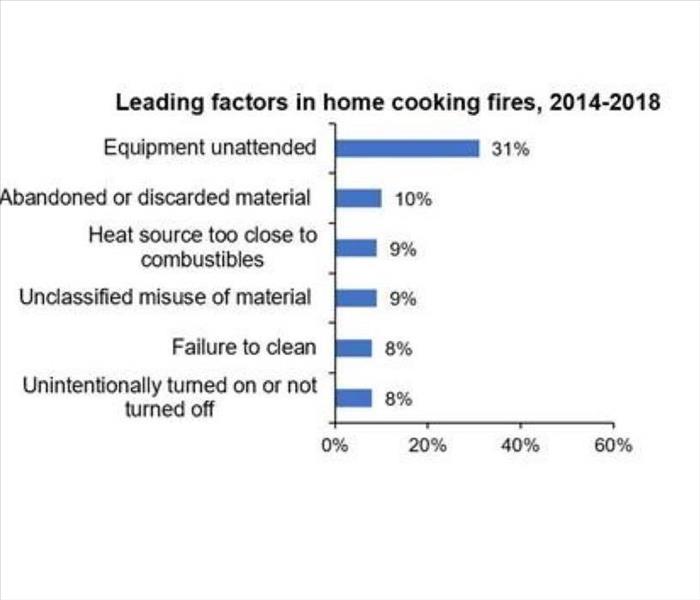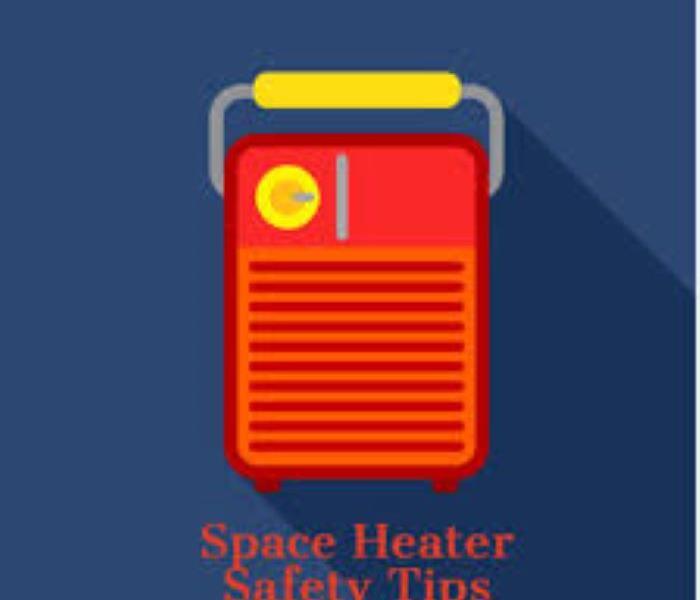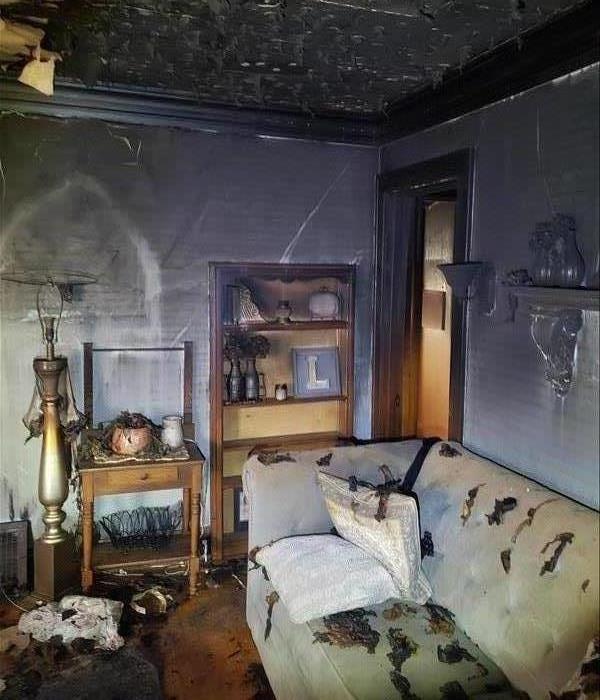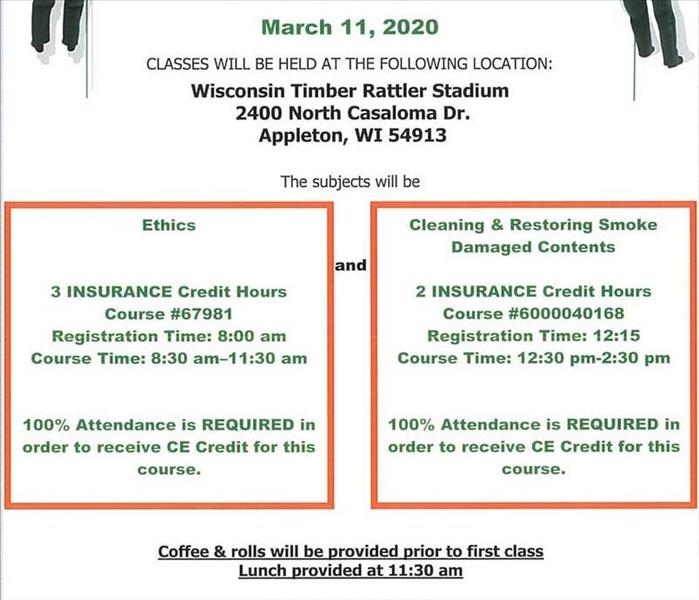Recent Fire Damage Posts
What to Do Immediately After a House Fire
10/9/2024 (Permalink)
Experiencing a house fire is overwhelming, but taking the right steps afterward can help you recover more quickly. Here’s what to do:
1. Ensure Safety First
Make sure everyone is safe, and only re-enter your home once the fire department says it’s safe to do so.
2. Contact Your Insurance Company
Notify your insurer right away. Take photos of the damage to help with your claim.
3. Secure the Property
Damaged windows, doors, and roofs need to be secured to prevent further damage or theft. This is the time to call SERVPRO for 24/7 emergency board-up services. They’ll secure your property and prevent additional weather or security issues.
4. Call SERVPRO for Emergency Cleanup
Fire damage isn’t just about what’s burned. Smoke, soot, and water from firefighting efforts can cause further damage if not addressed quickly. SERVPRO’s emergency cleanup team is available immediately to assess the damage, clean up soot and smoke, and start the drying process for water damage.
5. Focus on Recovery
While SERVPRO handles the cleanup and restoration, focus on emotional recovery for your family. Let the professionals restore your home so you can begin moving forward.
SERVPRO is ready to help as soon as the fire is out, offering fast, reliable cleanup to protect your home from further damage.
Kitchen Fire Cleanup: Why SERVPRO Should Be Your Top Choice
8/24/2023 (Permalink)
 Heavy soot damage in a home
Heavy soot damage in a home
Dealing with the aftermath of a kitchen fire can be overwhelming, but a swift and thorough cleanup is crucial to restoring your space. When it comes to fire damage restoration, SERVPRO should be your first choice. With their expertise and comprehensive approach, they can help you navigate this challenging situation with ease.
Assess the Damage: Before you begin the cleanup process, assess the extent of the damage. Evaluate both the visible damage and potential hidden issues like smoke residue, soot, and structural damage.
Safety First: Ensure your safety by wearing appropriate protective gear, including gloves and masks, to avoid inhaling potentially harmful particles.
Ventilation: Open windows and doors to ventilate the area and allow fresh air to circulate. Proper ventilation helps in dissipating lingering odors and preventing further smoke damage.
Remove Soot and Residue: Use a dry sponge or a vacuum cleaner with a HEPA filter to gently remove loose soot and residue from surfaces. Avoid using water-based cleaning methods as they can worsen the situation.
Professional Help from SERVPRO: For a thorough and effective cleanup, consider reaching out to SERVPRO. They specialize in fire damage restoration and have a team of trained professionals who understand the complexities of smoke and soot removal. SERVPRO uses advanced equipment and techniques to ensure your space is properly cleaned and restored.
Why SERVPRO?
- Expertise: With years of experience, SERVPRO knows the ins and outs of fire damage cleanup. They understand the specific challenges posed by kitchen fires and tailor their approach accordingly.
- Comprehensive Cleanup: SERVPRO doesn't just clean visible damage; they also address hidden issues like lingering odors, soot particles, and structural damage.
- Advanced Equipment: SERVPRO employs state-of-the-art equipment and techniques, ensuring a thorough and efficient cleanup process.
- Quick Response: Time is of the essence after a fire. SERVPRO offers prompt response and 24/7 availability to mitigate further damage.
- Supportive Approach: Dealing with a fire can be emotionally taxing. SERVPRO's professionals provide compassionate support throughout the restoration process.
- Preventing Future Issues: SERVPRO goes beyond cleanup. They provide recommendations and solutions to help prevent future problems related to fire damage.
In the aftermath of a house fire, SERVPRO stands out as the reliable choice for effective cleanup and restoration. Their commitment to professionalism, expertise, and compassionate service ensures that your space will be back to its pre-fire condition sooner than you think.
Firework Safety Month
6/1/2022 (Permalink)
June is firework safety month. According to the National Fire Protection Association, “Fireworks caused an estimated 19,500 fires in 2018, including 1,900 structure fires, 500 vehicle fires, and 17,100 outside and other fires. Five deaths resulted from fireworks-started fires, along with 46 civilian injuries, and $105 million in direct property damage.” And this doesn’t include the injuries the fireworks themselves directly cause to individuals. According to the U.S. Consumer Product Safety Commission, each year 10,000 people are injured due to fireworks. In 2017 alone, 12,900 individuals were injured, with eight people dying. About 50% of all reported injuries are of children and young adults under 20. Out of this, 45% of the affected children are under the age of 14.”
With numbers like these it’s easy to see why it’s probably best to leave the fireworks displays up to the professionals. But if you are going to use fireworks this summer, here are some safety tips from the National Safety Council:
- Never allow young children to handle fireworks
- Older children should use them only under close adult supervision
- Never use fireworks while impaired by drugs or alcohol
- Anyone using fireworks or standing nearby should wear protective eyewear
- Never hold lighted fireworks in your hands
- Never light them indoors
- Only use them away from people, houses and flammable material
- Never point or throw fireworks at another person
- Only light one device at a time and maintain a safe distance after lighting
- Never ignite devices in a container
- Do not try to re-light or handle malfunctioning fireworks
- Soak both spent and unused fireworks in water for a few hours before discarding
- Keep a bucket of water nearby to fully extinguish fireworks that don't go off or in case of fire
- Never use illegal fireworks
Dehumidifier Fire Risk
3/23/2022 (Permalink)
According to Wikipedia, “A dehumidifier is an air conditioning device which reduces and maintains the level of humidity in the air. This is done usually for health or comfort reasons, or to eliminate musty odor and to prevent the growth of mildew by extracting water from the air. It can be used for household, commercial, or industrial applications. Large dehumidifiers are used in commercial buildings such as indoor ice rinks and swimming pools, as well as manufacturing plants or storage warehouses. Typical air conditioning systems combine dehumidification with cooling, by setting cooling coils below the dewpoint and collecting the condensate.”
In the restoration business we use large dehumidifiers on a regular basis when mitigating water damage. Air movers or fans cause water to evaporate out of materials. But that moisture than evaporates into the air. Too much moisture in the air, or humidity, can also cause mold. Fans/air movers and dehumidifiers work together to get any water disaster properly dried.
Many homeowners and small business owners also use small dehumidifiers in their homes and basements to keep humidity and mold away. But did you know that dehumidifiers can also overheat and cause a fire? We have seen our share of home fires caused y dehumidifiers that have overheated. The US Consumer Product & Safety Commission issued its most recent recalls for dehumidifiers on August 4, 2021, indicating that the recalled dehumidifiers can overheat and catch fire, posing fire and burn hazards. The recall involves dehumidifiers manufactured before September 1, 2017, with the brand names including AeonAir, Amana, ArcticAire (Danby), Classic (Danby/Home Hareware Stores), Commercial Cool, Danby, Danby Designer, Danby Premiere, De’Longhi, Edgestar, Friedrich, Generations (Danby), Haier, Honeywell (JMATEK/AirTek) and Idylis to name a few. For a complete list visit:
Two Million Dehumidifiers With Well-Known Brand Names Recalled Due to Fire and Burn Hazards; Manufactured by New Widetech | CPSC.gov
Kitchen Fires & Fire Extinguishers
3/10/2022 (Permalink)
The number one cause of home fires is cooking. The kitchen is where the 3 things needed for a fire come together: heat, oxygen, and fuel. Oxygen is always present. Stoves provide heat. And cooking oil or the oil in grease provide the fuel. Almost 10% of cooking fires spread beyond the kitchen and cause significant damage to the house. And truthfully it doesn’t have to spread beyond the kitchen to do significant damage. The smoke can travel through out the house causing significant smoke damage.
You should never throw water on a grease fire because it can make it worse. You can douse a fire with baking soda or salt, but we often don’t have enough on hand to do the trick. The other problem with baking soda and salt is in the panic of the moment they can easily be confused for flour or baking powder, both of which are highly flammable and will make the fire worse.
Your best bet is to store a small fire extinguisher in the kitchen or very close by. But did you know that there are different types of fire extinguishers? It’s based on what is sprayed from the fire extinguisher. Some extinguishers use water, others use foam, others use chemicals. Obviously for the kitchen you don’t want a water-based fire extinguisher. Following is a great article on the different types of fire extinguishers to help you decide which one is right for you.
Most Common 5 types of fire extinguishers and their uses (teamworkholding.com)
Holiday Candle Fires
12/8/2021 (Permalink)
Many people enjoy lighting candles during the holiday season. As a result, December is the biggest month for candle fires. “In 2016, the top three days for candle fires were Christmas Day, New Years Eve, and New Years Day. More than half (56%) of the December home decoration fires were started by candles, compared to nearly a third (31%) the remainder of the year.” According to the National Candle Association here are some candle safety basics:
- Before burning, trim the candle wick to ¼ inch in order to prevent a flame from being too large
- Always burn candles in a well-ventilated room and avoid drafts/vents
- Never leave a candle unattended
- Never place a candle near or on anything that can catch fire
- Use a candle snuffer to extinguish the flame (never use water)
- Do not move a candle until it is completely cooled
The best way to prevent house fires caused by candles is to not use candles at all. Here are some alternatives to candles that can help create that desired atmosphere and scent without the danger of a flame:
- Essential Oil Diffuser
- Battery-Powered Candles
- Candle Warmers
But if you do experience smoke or fire damage as the result of a burning candle, our experts at SERVPRO of Appleton & Winnebago County are available 24 hours a day, 7 days a week to help restore your property.
Cooking Fires
6/9/2021 (Permalink)
In a blog post a few months ago we discussed space heaters and the fire risk they present. Space Heaters are the second most common cause of home fires. But the number one cause of home fires is cooking.
According to the NFPA “US fire departments responded to an estimated average of 172,900 home structure fires per year started by cooking activities in 2014-2018. These fires caused an average of 550 civilian deaths, 4,820 reported civilian fire injuries, and more than $1 billion in direct property damage per year.”
The top causes of cooking fires are:
- Placing combustible items too close to the stove or other heat source such as oven mitts, pizza boxes, dish rags etc…
- Unintentionally turning on the stove or heating element, or forgetting to turn it off
- Leaving cooking food unattended
Keep these things in mind when cooking because every year we get many calls for fires caused for each of these reasons.
Clothes Dryer Fires
3/25/2021 (Permalink)
Any appliance that creates heat can be a fire hazard and there are many of them throughout our homes and businesses. They range from the small and seemingly insignificant like a curling iron, to the big and more obvious like a stove. A significant one we tend to overlook is a clothes dryer.
Most of us know that a clothes dryer produces lint. As our clothes, towels and sheets tumble around in the dryer, fine fibers separate from the cloth. These fibers are called lint. Dryers are equipped with lint traps to collect the lint. It is extremely important that the lint trap is cleaned after every load. Cleaning the lint trap helps air flow and keeps the machine running more efficiently. But perhaps more importantly, cleaning the lint trap helps reduce the risk of fire. Dryer lint is extremely flammable. If enough of it accumulates, the heat from the dryer can ignite the lint and cause a fire. The lint trap is not perfect. Even with regular cleaning lint can get past it. Cleaning your lint trap after every load and even a thorough cleaning of your dryer’s venting system will go a long way towards preventing fires.
Recently we were called to a fire caused by a commercial clothes dryer at a boutique hotel in downtown Appleton. Luckily, the fire was noticed quickly, and damage was fairly contained. That is why some people prefer to be home when they run their clothes dryer versus turning it on and leaving the house for several hours.
Chimney Fires
3/18/2021 (Permalink)
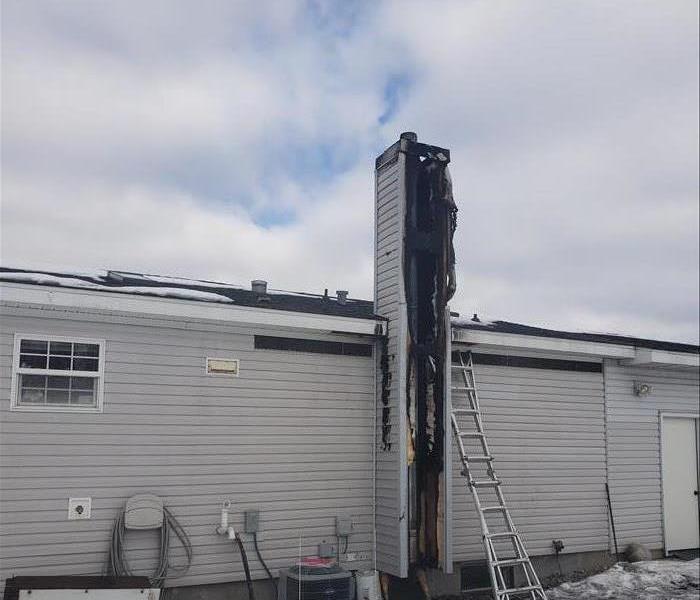 This chimney fire in Stevens Point, Wisconsin caused significant smoke damage to the inside of the house.
This chimney fire in Stevens Point, Wisconsin caused significant smoke damage to the inside of the house.
According to Wikipedia, “A chimney fire is the combustion of residue deposits referred to as soot or creosote, on the inner surfaces of chimney tiles, flue liners, stove pipes, etc.”
So, what is creosote? When wood burns, certain by-products or substances are produced. There is the smoke you can see, as well as things you cannot see like tar in the smoke, water vapor, gases, unburned wood particles, and assorted minerals. These by-products are warm, and when they pass through the cool chimney, condensation forms. The resulting residue sticks to the inner walls of the chimney creating something called creosote. Creosote is brown, sticky and highly flammable. If enough creosote builds up, and the temperature in the chimney becomes high enough, a chimney fire can erupt.
There are things you can do to help minimize your risk of a chimney fire. Here are three things to avoid that encourage the build-up of creosote:
- Burning wet and/or unseasoned wood or things like wrapping paper that may contain chemicals. Your wood should be seasoned or dried for at least 6 months after chopping and kept stored under cover to prevent it from getting wet. If you want to be extra certain your wood is sufficiently dry, you can purchase a cheap moisture meter (for more info on moisture meters see our previous blog post on what they are and how they work) at a hardware store. The moisture content of your wood should be no more than 20%
- Not having an adequate air supply. Always make sure your fire is getting enough air by making sure your chimney flue is completely open and the glass doors are open
- Avoid cooler chimney temperatures by ensuring your chimney is adequately insulted
But probably the most important thing you can do to avoid a chimney fire is to have your chimney regularly inspected and cleaned by a certified Chimney Sweep.
Space Heater Fires
3/8/2021 (Permalink)
During the fall, the dead of winter, and even into the early spring months, people like to use space heaters in their home or office. People sometimes bring a small space heater to work and place it under their desk. Space heaters are also used in garages, by college students in dorms, in old drafty apartments or homes, and a variety of other places. But no matter where you may be using a space heater, it is important to follow some basic safety tips because any appliance that generates heat is a potential fire hazard. According to the National Fire Protection Association, space heaters cause 43% of home heating fires each year.
Space heaters should always be placed on a solid and level surface. But the leading cause of space heater fires is placing flammable items such as curtains, blankets, towels or clothing too close to them. These items can become overheated and catch fire. This is something to keep in mind for any appliance that generates heat. We often help customers restore their home after a fire that started in the kitchen when things like pizza boxes or hot pads were left on top of the stove or too close to it. The same concept applies to space heaters.
It is also important to plug the space heater directly into the electrical outlet versus using an extension cord. Because space heaters have heating elements that can sometimes reach as high as 600 degrees Fahrenheit, they can generate a lot of energy. If you use an extension cord, the outlet can overheat, short -circuit and potentially start a fire. For the same reason, you should regularly inspect the cord on your space heater for signs of damage or wear and make sure it is not frayed or pinched. In addition, the electrical cord should never be placed underneath a throw rug.
It is also wise to make sure your space heater has a UL certification label. Having a UL tested product shows that the equipment meets a nationally recognized safety standard.
Structure vs Contents in a Fire Loss
12/4/2020 (Permalink)
In an August 12th blog post, we discussed the fact that restoring your home or business after a water loss is often a two step process. There is the mitigation process, where the structure is dried, and secondary damage like wood rot and mold is prevented. Then there is the rebuild process where things that were displaced, or couldn't be properly dried in the mitigation process, are rebuilt or put back together.
Restoring your home or business after a fire is also a two step process. There is the process of cleaning and repairing the structure itself, and there is the process of cleaning the contents IN the structure; things like clothing, dishes, furniture, art work, electronics etc...As you can see by the attached picture from a home fire, the structure, ie..the walls and ceiling are completely coated in soot and smoke, as well as the contents of the home like the couch, tables, wall sconces etc.
In a water loss situation, the steps must be done in the proper order. In a fire loss situation, the two processes can go on simultaneously. In addition, it's entirely possible to hire one company to clean and repair the structure, and have different company clean the contents.
We here at SERVPRO of Appleton are a full service restoration company. We can clean and repair your structure after a fire, as well as the contents of your structure. If you experience a fire, we can make it like it never even happened. Pictures of homes we have restored after a fire can be found in the Before and After Photos section of our website.
National Pet Fire Safety Day
7/15/2020 (Permalink)
July 15th is National Pet Fire Safety Day. The American Kennel Club in association with ADT Security Services declared National Pet Fire Safety Day in 2009 to educate pet owners on how to take steps to prevent fires and plan for unexpected emergencies. In other words, pet owners need to take steps to ensure their pets don’t accidentally cause a fire, and they need to take steps to ensure their pets safety should the unfortunate happen.
Many home fires are caused by one of four things:
- Electrical Fires
- Cooking or Kitchen Fires
- Candles or Other Open Flames
- Clothes Dryers
With that in mind, here are some Pet Fire Safety Tips:
- Extinguish open flames. Pets are curious and certainly not cautious. Wagging tails haphazardly knock over candles. Curious kitties will paw at sizzling grease, quickly sending a kitchen up in flames.
- Remove knobs from the stove. When not in use, they will not accidentally get turned on.
- Consider flameless candles for ambiance and backup lighting in the event of a power outage.
- Replace glass water bowls with metal or plastic. Outside on wooden decks, they can heat up and actually start a fire.
- Store leashes and collars near the entrance of your home. When away, have your pets in the main living area for easy rescue.
- Secure young pets when away from home. This can help avoid fire hazards. Pet kennels or in a pet-proofed room are options.
- Fire alert window clings help firefighters identifying the room your pets are located and identify the number of pets in the home. Add one to the window of the room you keep your pets when you are away. Keep it updated with the number of pets who reside with you and your current phone number.
- Have a plan when you are home. Know which family members will be responsible for each pet.
Fire Restoration for Insurance Professionals
1/20/2020 (Permalink)
Are you an insurance professional who would like to learn more about cleaning & restoring smoke damaged contents? If so, we have a great opportunity for you!
On Wednesday, March 11th, 2020, we will be hosting two Continuing Education Courses at the Wisconsin Timber Rattler Stadium in Appleton. There will be a 3 credit morning class on "Ethics" and a 2 credit afternoon class on "Cleaning & Restoring Smoke Damaged Contents".
Coffee & Pastries will be served at the morning registration and lunch will be served at 11:30. You are welcome to join us for lunch regardless of which classes you are attending.
This has become a very popular annual event and space is limited, so register early. To reserve your spot, contact our office at (920) 832-1110 or email: jleadley@SERVPROappleton.com
We look forward to seeing you!
Candle Safety
1/9/2020 (Permalink)
Valentine’s Day is fast approaching. Many people will burn candles for the holiday. Candles can create a romantic and relaxing atmosphere while producing a pleasing scent. But when used improperly, candles can cause house fires. According to the National Fire Protection Association, approximately 8,200 home fires are started each year by candles.
According to the National Candle Association here are some candle safety basics:
- Before burning, trim the candle wick to ¼ inch in order to prevent a flame from being too large
- Always burn candles in a well-ventilated room and avoid drafts/vents
- Never leave a candle unattended
- Never place a candle near or on anything that can catch fire
- Use a candle snuffer to extinguish the flame (never use water)
- Do not move a candle until it is completely cooled
The best way to prevent house fires caused by candles is to not use candles at all. Here are some alternatives to candles that can help create that desired atmosphere and scent without the danger of a flame:
- Essential Oil Diffuser
- Battery-Powered Candles
- Candle Warmers
But if you do experience smoke or fire damage as the result of a burning candle, our experts at SERVPRO of Appleton & Winnebago County are available 24 hours a day, 7 days a week to help restore your property.
Great American Smokeout
11/21/2019 (Permalink)
November 21st marks the “Great American Smokeout”. The American Cancer Society sponsors the Great American Smokeout every year on the third Thursday in November. This is an annual social engineering event to encourage Americans to quit tobacco smoking. It challenges smokers to quit smoking for 24 hours in the hopes that they will continue beyond 24 hours. While we all know the health benefits of not smoking, we in the restoration business think it’s a good idea to not smoke as well.
According to FEMA, “An estimated 7,600 smoking-related fires in residential buildings occur each year in the United States. While smoking-related fires accounted for only 2 percent of all residential building fires, they were a leading cause of civilian fire deaths, accounting for 14 percent of fire deaths in residential buildings. Nonconfined fires accounted for 93 percent of residential building smoking-related fires. Sixty-seven percent of nonconfined residential building smoking-related fires occurred because of abandoned or discarded smoking materials or products, primarily cigarettes. The bedroom was the leading area of fire origin for nonconfined residential building smoking-related fires at 24 percent. Residential building smoking-related fires occurred most often from noon to 8 p.m., peaking from2 to 3 pm at 6 percent”
Giving up smoking will not only improve your health, but it will also reduce your risk of a home fire. Consider joining the “Great American Smokeout” today.
What is a Puffback?
11/6/2019 (Permalink)
Cold weather is upon us sooner than expected this year. Sadly it's time to talk about furnaces, preparing our homes for winter and similar matters. We here at SERVPRO have a brochure to discuss winter related topics. Stop by our office or ask your SERVPRO professional visiting your home or office for one of these brochures. Or follow our blog in the coming weeks and we will be sharing information from this brochure.
Today we'll talk about "puffbacks". "A puffback is a messy furnace malfunction that occurs when an oil burner backfires, sending soot throughout your home or business. It can happen all at once, covering an interior in grimy soot, or a puffback can leak soot particles more gradually. Equipped with the training, tools and experience to quickly and efficiently clean and restore your home or business, SERVPRO of Appleton will help make your puffback "Like it never even happened."
Kitchen Fires
7/1/2019 (Permalink)
Kitchen fires are the number one cause of home fires, and a grease fire is the most common type of kitchen fire. Your home’s kitchen is where heat, electricity, water and grease all come together. A grease fire is extremely dangerous as it can get out of control quickly and spread from the stove throughout the kitchen and other rooms of the house.
There are two common types of grease fires in the kitchen. One is in the cooking pan itself and the other is under the burner in the drip pan. Often, drip pan fires result from previous cooking sessions. When something is spilled into the drip pan it cannot be cleaned until the burner and the stove has cooled. It’s not uncommon for people to forget to go back and clean the drip pan, setting themselves up for trouble the next time they cook.
Here are some tips for preventing kitchen grease fires:
- Before cooking anything, make sure the burner is cool and wipe up any spills in the drip pan and around the burner before turning on the heat.
- The most common reason for a grease fire is leaving a hot pan unattended. Keep your eye on all pans while cooking.
- Pay attention to heat ratings for cooking oil. Some oils can be heated more than others before catching fire. If you are cooking and the oil starts to smoke, it is too hot. The flash point of a grease fire is 500 degrees Fahrenheit. Grease will smoke furiously before it ignites, so if you notice smoke, turn down the heat immediately.
- Keep cookbooks, towels, paper towels and anything combustible away from the stove. A grease fire can quickly turn into a bigger fire if it catches onto other combustibles.
- Avoid heating grease before putting food into it. Food can fall quickly into the grease and make it splash out, causing grease burns to you or hitting the heat source and catching fire.
- When deep frying, use a pan or cooking container designed for deep frying that will allow equal space of the grease and food contents above what you are frying. For example, if you are cooking chicken and the grease and chicken are three inches deep, the pan sides should be at least six inches deep.
- Have a class ABC fire extinguisher in your kitchen. Experts recommend having at least three fire extinguishers in your home; in the kitchen, garage and main living area.
- If a pan does catch fire, the best thing to do is smoother it, by using an oven mitt and placing a lid on top of the pan or by using a fire extinguisher. NEVER throw water on the fire or try to run it to the sink or outside.
And if a kitchen grease fire does get out of control, resulting in damage or odor to your home, our experts at SERVPRO of Appleton are here to help. We can clean your home "Like it never even happened."
Preparing Yourself in Case of Fire Damage
5/30/2019 (Permalink)
Linda Cobb, 15 year owner of a disaster restoration company in Michigan, and author of the book “Talking Dirty with the Queen of Clean” also gives good advice in Chapter 29 “Turning Down the Heat on Fire Damage”.
“….in those first hours after a fire it’s all you can do to remember your name. The fire truck has just left and there you stand amid what once was your home and is now a smelly, wet, black mess that you hardly recognize. You want to sit down and have a good cry, but there isn’t any place clean to sit. What do you do now? Is everything ruined? This chapter will help you deal with the emotional turmoil and give you sound information about what you, as the homeowner, need to do.
Just in Case
First, as soon as you are done reading this, put your homeowner’s policy, along with your agent’s name and phone number in a fireproof box or bank safety deposit box. This enables you to easily find them and protects them from being destroyed in the fire. Make notes from this chapter and put them with your insurance information.
Get on the Phone
After the fire is out, call your insurance agent or the 800 number that is often provided on your policy to report claims.
Call immediately. It may seem like the damage couldn’t be worse, but it could. After a fire there can be ongoing damage from acid soot residue. Fire produces two main pollutants – nitrous oxide (from burning wood, food, etc.) and sulfur dioxide (from burning plastics and petroleum by products, etc.) When these pollutants combine with moisture and humidity, they form acid! Within hours this can cause substantial and continuing damage. Prompt attention from your local disaster restoration firm will eliminate the problem and prevent further damage to valuables.“
Our experts at SERVPRO of Appleton are here for you 24 hours a day, seven days a week. We will preserve, protect and secure your property with our board up service should it be necessary. And we will work with your insurance adjuster to estimate the damage and begin the clean up process.
Electrical Fires & Arc Faults
1/17/2018 (Permalink)
Electrical fires are one of the leading causes of home fires. And while things like faulty wiring, overheating appliances, misuse of extension cords and heating units, and even faulty light fixtures are most often the cause, it's important to note that the underlying cause is most often arc fault conditions. The National Fire Protection Agency and the National Association of State Fire Marshals, estimate that 50 to 75 percent of all electrical home fires in the United States are caused by arc fault conditions. An arc fault is a high power discharge of electricity between two or more conductors. This discharge creates heat, which can break down the insulation covering wires and trigger and electrical fire.
So while it's important to take precautions like not overloading electrical outlets, inspecting appliance cords for damage, keeping combustible materials away from heat sources, and watching for signs of faulty wiring like switches that crackle or lights that dim, it's also a good idea to install arc fault circuit interrupters where appropriate. While conventional circuit breakers respond to short circuits and overloads, arc fault circuit interrupters, detect an electrical arc and break the circuit if one is detected. Arc Fault Circuit Interrupters are selective. Normal arcs do not cue them to trip. Their circuitry continuously monitors the electrical current and discriminates between normal and unwanted arcing conditions.
Kitchen Grease Fire
7/19/2017 (Permalink)
Your home’s kitchen is where heat, electricity, water, and grease come together. It’s no wonder, kitchen fires are the number one cause of home fires. And the most common type of kitchen fire is a grease fire. A grease fire is extremely dangerous as it can get out of control quickly and spread from the stove throughout the kitchen and other rooms of the house.
There are two common types of grease fires in the kitchen. One is in the cooking pan itself and the other is under the burner in the drip pan. Often, drip pan fires result from previous cooking sessions. When something is spilled into the drip pan it cannot be cleaned until the burner and the stove has cooled. It’s not uncommon for people to forget to go back and clean the drip pan, setting themselves up for trouble the next time they cook.
Here are some tips for preventing kitchen grease fires:
- Before cooking anything, make sure the burner is cool and wipe up any spills in the drip pan and around the burner before turning on the heat.
- The most common reason for a grease fire is leaving a hot pan unattended. Keep your eye on all pans while cooking.
- Pay attention to heat ratings for cooking oil. Some oils can be heated more than others before catching fire. If you are cooking and the oil starts to smoke, it is too hot. The flash point of a grease fire is 500 degrees Fahrenheit. Grease will smoke furiously before it ignites, so if you notice smoke, turn down the heat immediately.
- Keep cookbooks, towels, paper towels and anything combustible away from the stove. A grease fire can quickly turn into a bigger fire if it catches onto other combustibles.
- Avoid heating grease before putting food into it. Food can fall quickly into the grease and make it splash out, causing grease burns to you or hitting the heat source and catching fire.
- When deep frying, use a pan or cooking container designed for deep frying that will allow equal space of the grease and food contents above what you are frying. For example, if you are cooking chicken and the grease and chicken are three inches deep, the pan sides should be at least six inches deep.
- Have a class ABC fire extinguisher in your kitchen. Experts recommend having at least three fire extinguishers in your home; in the kitchen, garage and main living area.
- If a pan does catch fire, the best thing to do is smoother it, by using an oven mitt and placing a lid on top of the pan or by using a fire extinguisher. NEVER throw water on the fire or try to run it to the sink or outside.
And if a kitchen grease fire does get out of control, resulting in damage or odor to your home, our experts at SERVPRO of Appleton are here to help. We can clean your home "Like it never even happened."



 24/7 Emergency Service
24/7 Emergency Service
